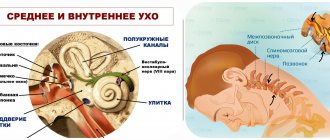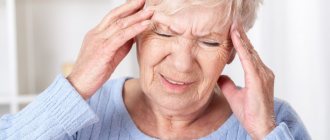For some people, especially older people, their blood pressure drops too low when they sit or stand (a condition called orthostatic or postural hypotension). Symptoms of weakness, dizziness, lightheadedness, confusion, or blurred vision develop within a short time - from a few seconds to a few minutes after standing up (especially after lying in bed or sitting for a long time) and quickly disappear when the person lies down. However, some people may fall, faint, or, very rarely, have short-term seizures. Symptoms develop more often and are more severe after exercise, drinking alcohol and/or eating a large meal, or when there is a lack of fluids (dehydration).
Some young people develop similar symptoms when standing up, but do not experience a drop in blood pressure. Often, when standing up, their heart rate rises above normal (tachycardia develops), a disease called postural orthostatic tachycardia syndrome (POTS). The cause of dizziness in such people, given normal blood pressure, is not yet clear.
Causes of dizziness
Dizziness or lightheadedness when standing up occurs as a result of dysregulation of blood pressure. Typically, when standing up, gravity causes blood to pool in the veins of the legs and torso. This causes a decrease in blood pressure and the volume of blood flowing from the heart to the brain. Low blood flow to the brain causes dizziness and other symptoms. To compensate, the nervous system quickly increases the heart rate and constricts blood vessels, which quickly returns blood pressure to normal before symptoms begin to develop. A part of the nervous system called the autonomic nervous system is responsible for this compensation.
Problems with blood pressure regulation, which can lead to dizziness when standing up, can be caused by many medical conditions. Among them:
- Impaired function of the autonomic nervous system due to diseases or medications;
- Decreased ability of the heart to pump blood;
- Decreased blood volume (hypovolemia);
- Hormonal disorders.
Causes vary depending on whether symptoms are new to developing or have already been present for some time.
Common causes of dizziness
The most common causes of new-onset dizziness when standing up include:
- Decreased blood volume (eg, due to dehydration or blood loss)
- Medications;
- Prolonged bed rest;
- Decreased adrenal function (adrenal insufficiency).
The most common causes of dizziness when standing up that have been present for a long time (chronic) include
- Age-related changes in blood pressure regulation;
- Medications;
- Dysfunction of the autonomic nervous system.
Evaluation of patients with dizziness
People who feel dizzy or lightheaded when standing up often recover quickly by sitting down and then slowly standing up again. However, it is usually important to determine the cause of such dizziness. The following information can help patients decide whether to see a doctor and know what to expect during a doctor's evaluation.
Warning signs in patients with dizziness
Some symptoms and signs in patients who feel dizzy or lightheaded when standing up should be cause for concern. These include:
- Blood in the stool or black, tarry stool;
- Neurological symptoms, such as difficulty walking and/or loss of coordination or balance.
When to see a doctor
If alarming signs appear, or if you fall or lose consciousness, you should immediately consult a doctor. If you develop frequent or persistent episodes of dizziness when standing up, you should consult a doctor at the first opportunity. Usually a week's delay will do no harm. If you experience occasional episodes of dizziness when standing up, you should call your doctor. The doctor will decide whether the patient needs to be seen urgently, depending on other symptoms and medical history.
What does a doctor do
First, the doctor will ask questions about the patient's symptoms and medical history. They then perform a physical examination. Based on the results of a history and medical examination, it is often possible to suggest the cause of dizziness and plan the necessary examinations in each specific case.
Doctors ask:
- How long ago did dizziness appear?
- Have you ever fallen or lost consciousness during an episode of dizziness?
- Whether the patient has had conditions known to cause dizziness (such as bed rest or fluid loss);
- Does the patient have a medical condition (such as diabetes, Parkinson's disease, or cancer) that may cause dizziness?
- Whether the patient is taking medications (eg, antihypertensives) that may cause dizziness.
The doctor will then conduct an examination. The doctor will measure blood pressure and heart rate after the patient has rested in a supine position for 5 minutes. He will then measure blood pressure and heart rate again 1 minute and 3 minutes after the patient has assumed an upright position. The doctor may perform a digital examination of the rectum to look for possible gastrointestinal bleeding. An important part of the examination is a neurological examination to check strength, sensation, reflexes, balance and gait.
The most common causes of sudden dizziness—drugs, bed rest, and decreased blood volume—are usually easy to identify. In patients with long-term symptoms, examination findings such as movement problems may indicate Parkinson's disease. Numbness, tingling, or weakness may indicate a nervous system disorder.
Carrying out tests for dizziness
If the cause is not obvious (eg bed rest), testing is usually required. Your doctor will usually order an electrocardiogram (EKG), a complete blood count, and other blood tests (such as measuring electrolytes). Other tests are ordered based on the results, especially if the patient's symptoms suggest heart or nerve problems.
If doctors suspect that a drug is causing dizziness, they may suggest that the patient stop taking it and watch to see if the dizziness goes away, thereby confirming or denying the cause.
If doctors suspect disorders of the autonomic nervous system, an examination using an orthostatic stand may be prescribed. The patient lies flat on a special mechanized table for several minutes. The table is then tilted upward at an angle of 60°-80° degrees for 15-20 minutes, while blood pressure and heart rate are continuously monitored. If blood pressure does not decrease, the person is given intravenous isoproterenol (a drug that stimulates the heart) in a dose sufficient to speed up the heart rate by 20 beats per minute, and the test is repeated. This procedure takes from 30 to 60 minutes and is absolutely safe.
Don't get on your phone right away
After getting up, the last thing you should do is check the news and messages on your phone.
You shouldn't overload your brain at the beginning of the day. Spend at least half an hour without any sources of information, and it will yield results in productivity.
I am also sure that due to the freed up time, those who start getting up earlier will have a desire to spend this time stupidly scrolling through their feed on Instagram or VK. To avoid this, it is recommended to put it away and forget about it.
Treatment of dizziness
If possible, treat any causes, including changing the dose or stopping any medications that are causing the symptom. However, many causes cannot be cured, so steps are taken to relieve symptoms. Measures include lifestyle changes and medications.
Patients who require prolonged bed rest should sit up and exercise in bed every day if possible. Rising from a lying or sitting position should be done slowly and carefully. In general, you should drink enough fluids, limit or avoid alcohol, and exercise regularly if possible. Regular moderate-intensity exercise increases muscle tone in the walls of blood vessels, which reduces the amount of blood pooling in the legs. Symptoms may be relieved by sleeping on a bed with the head of the bed raised. In some patients, increasing salt intake may increase water retention and reduce symptoms. Doctors may recommend increasing your salt intake by adding more salt to your food or taking sodium chloride tablets. However, increasing salt intake may not be recommended for people with heart disease.
Your doctor may prescribe fludrocortisone, a drug that helps your body retain salt and water, thereby preventing your blood pressure from falling when you stand up. However, this drug may cause increased blood pressure when lying down, heart failure, and low potassium levels in the blood. Sometimes doctors prescribe fludrocortisone in combination with propranolol or another beta blocker. Midodrine is a drug that causes constriction of both arteries and veins, helping to prevent blood from pooling in the veins of the legs. Side effects include tingling or numbness and itching. This drug is not recommended for patients with coronary or peripheral artery disease.
In some cases, other medications such as nonsteroidal anti-inflammatory drugs (NSAIDs), droxidopa, pyridostigmine, and octreotide may help.
When you don't want to get up
It’s clear how to get out of bed when you can’t be late. There are several tricks for subsequent awakening. What to do if you don’t want to get out of your warm bed at all? For example, on a day off after a crazy work week. And there is an opportunity to devote the day to a blissful state of peace.
Alas, but you have to get up. You can't allow yourself to stagnate. And lying in bed all day is even worse. This is basic laziness, which has not yet brought anything good. Moreover, it’s summer now. It’s warm and nice outside, why not go for a walk on the weekend? Or go to the beach, for example? Or go out of town with friends? You can come up with a lot of ideas for the weekend, rather than devoting it to lying in bed.
The main thing that older people need to know
Dizziness or lightheadedness when standing up occurs in approximately 20% of older adults. It occurs more often in people with underlying health conditions, especially high blood pressure, and in residents of long-term care facilities. Many falls occur due to dizziness when standing up. Elderly people should avoid standing for long periods of time.
The increase in incidence in older people is associated with decreased responsiveness of the receptors that control blood pressure, combined with increased stiffness of the arterial wall, leading to difficulty moving more blood volume and increased blood pressure. Decreased receptor sensitivity leads to a delay in the normal reaction of the heart and blood vessels in response to the transition to an upright position. Paradoxically, high blood pressure, which is more common in older people, can contribute to decreased sensitivity of the receptors, increasing the likelihood of developing dizziness when standing up.
Get ready in the evening
If you don’t answer the question: “Why wake up so early?” then, most likely, you will find a bunch of excuses not to do it. So you need a plan, or in other words, a list of things for which you will wake up.
Before you go to sleep, talk through your plan for tomorrow morning.
For example: “Tomorrow I will wake up at 7:00, do breathing exercises, wash myself, do exercises, meditate and go to breakfast.” Or you can convince yourself that you will wake up in a good mood: “Tomorrow I will wake up very cheerful and full of energy, I will be happy with everything that this day has prepared for me.” Repeat these affirmations several times and the next day your subconscious will wake you up.
Key points about feeling dizzy or faint
- Dizziness or lightheadedness when standing up is usually due to decreased fluid volume in the body or dysfunction of the autonomic nervous system.
- With age, dysfunction of the autonomic nervous system to varying degrees often develops, but doctors examine all patients to rule out disorders of the nervous system.
- For a general examination of autonomic function, an orthostatic stand is used.
- Treatment includes physical measures to reduce the amount of blood pooling in the veins, regular exercise, increased salt intake, and sometimes fludrocortisone or midodrine.
Authors of the article: Andrea D. Thompson , MD, PhD, Department of Internal Medicine, Division of Cardiovascular Medicine, University of Michigan; Michael J. Shea , MD, Michigan Medicine at the University of Michigan
Breathing exercises
The first thing I do after getting out of bed is stand by the window and create a “vacuum”. This exercise takes 1-2 minutes, but as a result it supplies the body with the necessary oxygen and invigorates it quite well.
What does this gymnastics include? Here are the main steps:
- Stand by the window.
- Take a deep breath and exhale.
- After exhaling, pull your stomach in as much as possible (as shown in the picture).
- Pull it in and hold it for 10-15 seconds. Don't breathe at this moment.
- When you feel a burning sensation, begin to exhale slowly. Do not immediately throw your stomach out; maintain tension as you exhale.
- Catch your breath and do 3-4 more repetitions like this.








